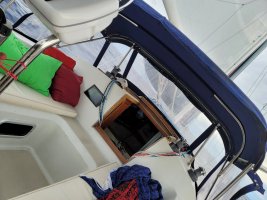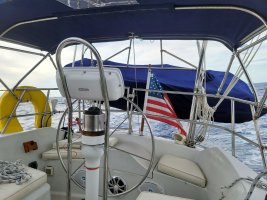Sometimes that transducer ring screws down easily, other times, the ring just doesn't seem to go on - especially as by this point, I am in haste and starting to panic a bit. I can see how it could be left jammed in but not really secured. Maybe - I'd think it would leak a bit like that, encouraging further efforts. But who knows: by definition, plastic deforms under pressure.
I think I'll look tonight to see if there is provision for a safety wire.
I think I'll look tonight to see if there is provision for a safety wire.




